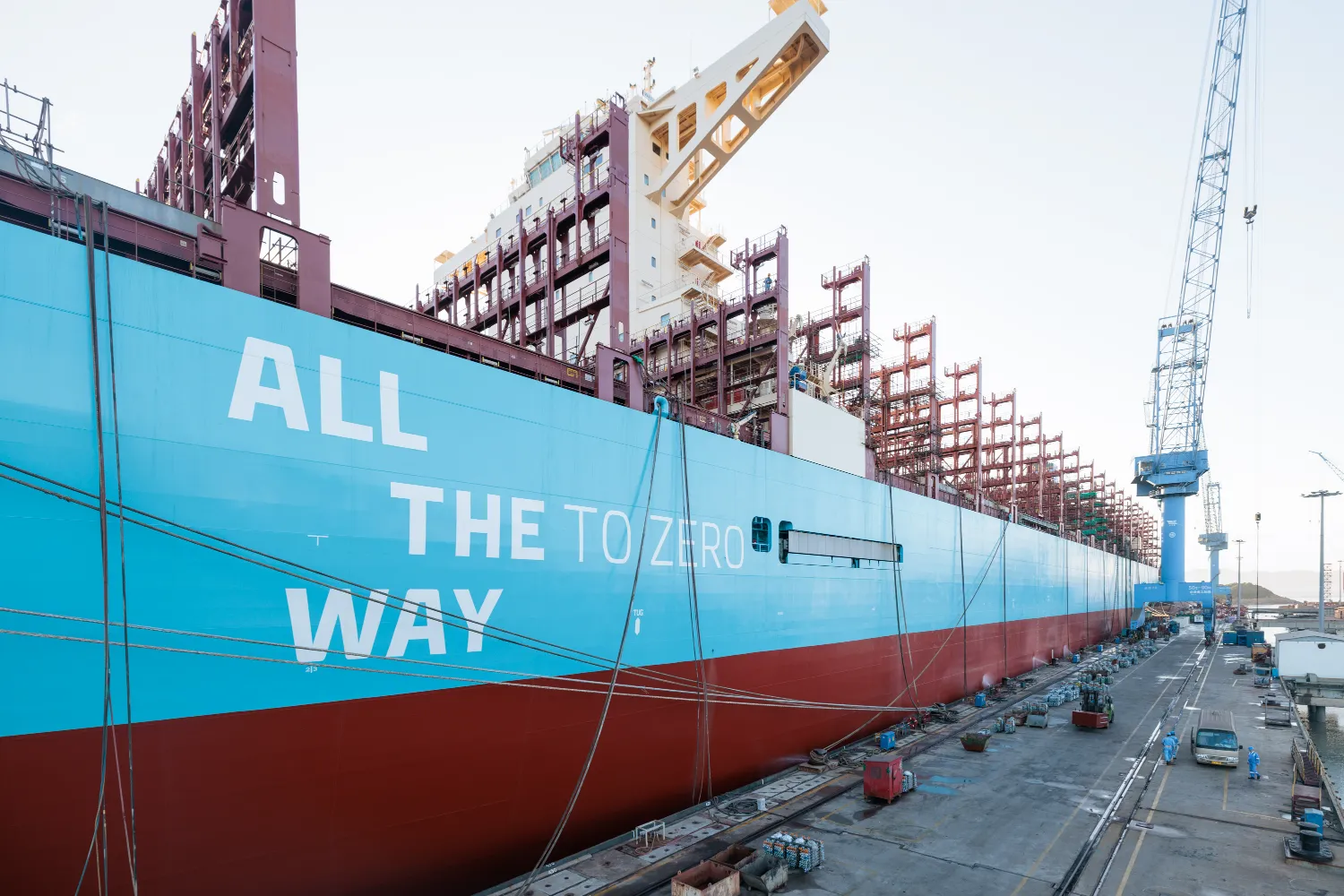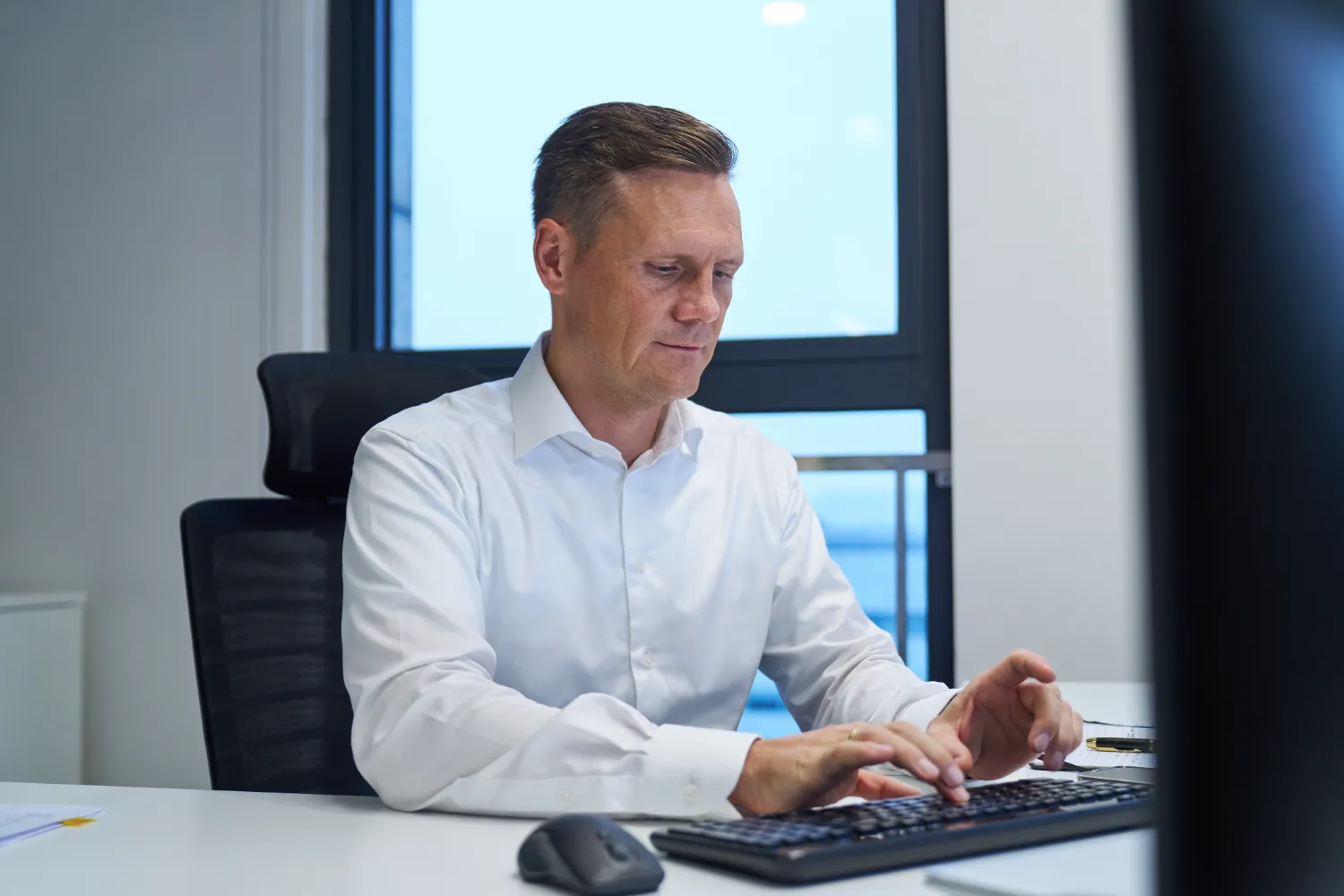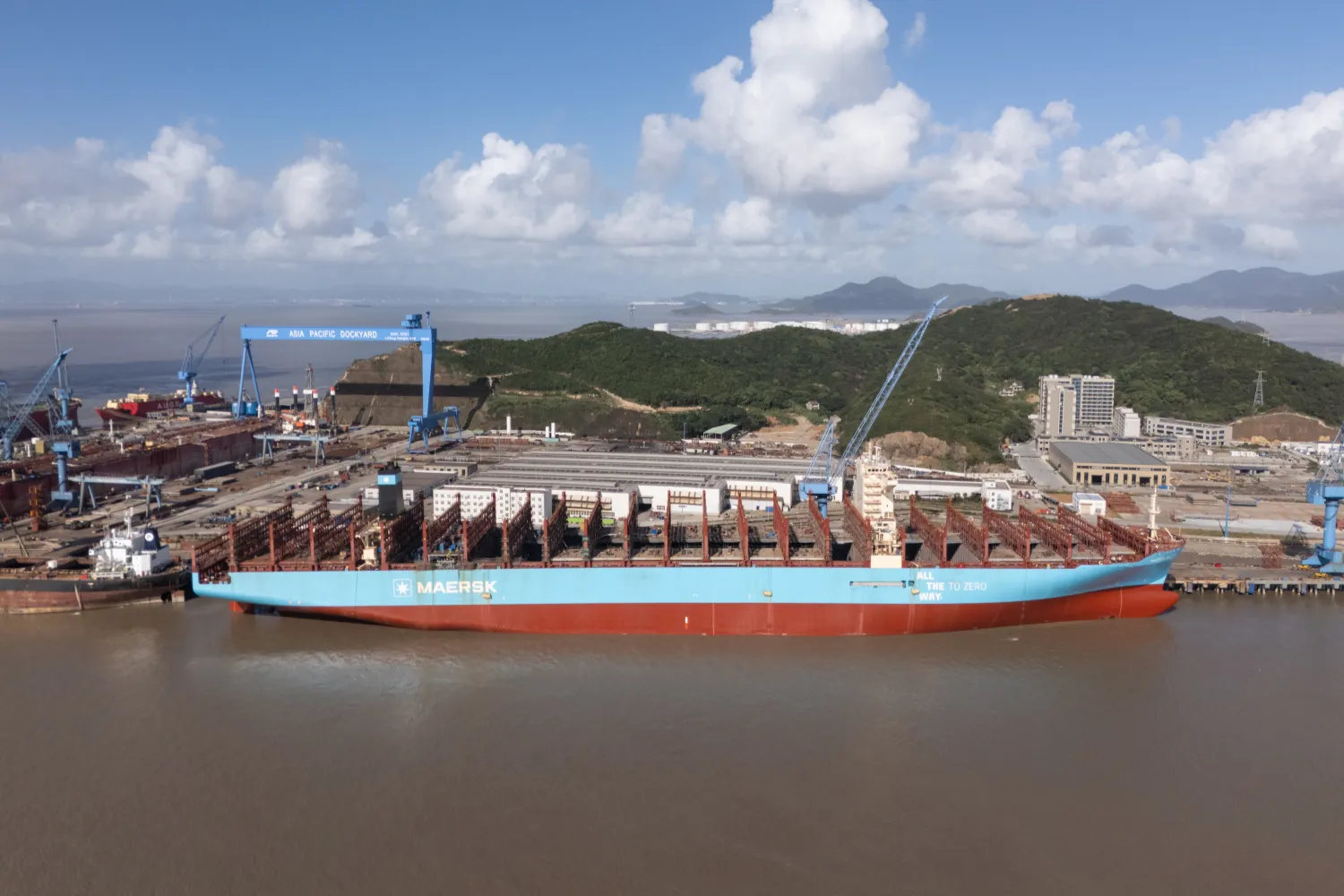By loading the video you agree to YouTube's privacy policy.
“It’s unusual for a shipowner to witness their ship being cut in two and then reassembled,” says Ole Graa Jakobsen, Vice President and Head of Fleet Technology at A.P. Moller–Maersk. The ship in question is the Maersk Halifax, a large container vessel of over 350 meters long and able to carry about 15,000 twenty-foot equivalent units (TEUs). Docked at the Asia Pacific Dockyard near Ningbo in eastern China, the Maersk Halifax was cut in half for an extraordinary project: retrofitting it with a dual-fuel engine to enable operation on methanol. The Maersk Halifax is the first vessel of this size and type to undergo such a retrofit.
The retrofit to a dual-fuel Everllence B&W ME-LGIM engine is a major step – not only for Maersk, but for the global maritime shipping industry. The new engine enables the Maersk Halifax to run on green methanol, making it possible to reduce the ship’s carbon dioxide (CO2) emissions by approximately 90 percent. As one of the largest shipping companies in the world, Maersk has significant influence, and its actions often shape the entire industry.

Retrofits to accelerate the maritime energy transition
Maersk, which deploys over 700 vessels, is committed to becoming net zero across its business by 2040, a full decade ahead of global targets. “Shipping is responsible for 3 percent of global emissions,” says Graa Jakobsen, “and if you need to change the world fleet just by building new vessels able to sail on low emission fuels, it will take too long. Therefore, retrofitting is critical in order to decarbonize the world fleet.”
The Maersk Halifax plays a crucial role in this process. Maersk currently has placed a preorder for ten additional vessels to undergo retrofitting in the same manner. “Retrofitted vessels generate 35 times less CO2 compared to newbuilds,” says Martin Hansen, Head of PrimeServ Marine & Power China at Everllence. “Converting these ten vessels to methanol is equivalent to removing around 500,000 cars off the road.”

“It’s a huge undertaking to make a retrofit like this,” says Graa Jakobsen, “and we’re aware that many people are watching – we’re the first movers doing a methanol retrofit, and it’s important this becomes a success.”
“We put our best people on the project,” says Graa Jakobsen, “and engaged the right partners in the Asia Pacific Dockyard and Everllence.” Maersk has worked successfully with both companies before and has a longstanding partnership with Everllence in decarbonizing its fleet with dual-fuel, low-carbon engines. “The cooperation is going well,” he adds. “The retrofit was completed according to high-quality standards – on time and in safe manner, with zero safety incidents during the project.”

Developing a dual-fuel methanol engine
In addition to retrofitting vessels such as the Maersk Halifax, Maersk has ordered 25 newbuilds equipped with dual-fuel engines capable of running on both methanol and diesel. These include 12 vessels with a capacity of 16,000 TEUs, 6 with 17,000 TEUs, and several smaller ships. “This will cut two million tons of CO2 from our fleet,” says Graa Jakobsen. “And the industry has been following fast, placing 125 orders after ours.”

When embarking on this transition, Maersk worked with Everllence from the outset. “Everllence already had a smaller operational engine, and we initially told them that we wanted a small engine as a pilot,” says Graa Jakobsen. “Six months later, we said we wanted to build larger vessels of this type, so we asked the management at Everllence to start developing the new 8G95ME-C9.5 LGIM engine to be able to run on methanol” – the same engine with which the Maersk Halifax, a Hong Kong-class vessel, has been retrofitted.
These ships will be operational until 2040, and they too are powered by ME-LGIM engines. “So, it was an obvious decision to take the new engine that we had just developed with Everllence and apply it to these vessels,” says Jakobsen. The Maersk Halifax was singled out because it was scheduled for dry dock two years ahead of plan, for historical reasons. “This was a good opportunity to get the retrofitting operational before we apply it to the remaining 10 ships when they enter the service cycle in two years,” adds Graa Jakobsen.

Seamless switching between diesel and methanol
The Maersk Halifax was elongated during the retrofitting process to accommodate the methanol tanks and create additional space for containers. This is the step that required cutting the vessel in two. The second major milestone during the project involved disassembling, upgrading, and reassembling the engine.
“We added more advanced equipment to the engine, which also meant that the entire control system, the brain behind it, needed to be upgraded simultaneously,” says Martin Hansen. “Our new Triton system can handle both the diesel controls and the new dual-fuel controls.” One of the advantages of this system is a seamless transition between different fuel types. “No matter how you run the engine – on traditional fuels, methanol or any other fuel type – the engine will run as if nothing happened,” says Hansen. “If you stood on the bridge of the Maersk Halifax when it switches from one fuel to another, you wouldn’t notice it.”
of global CO2 emissions come from the maritime shipping industry.
of CO2 emissions can be saved when the Halifax runs on green methanol.
less CO2 come from retrofitted vessels versus newbuilds.
Staying ahead of the game with dual-fuel engines
When Maersk first decided to transition its fleet to greener fuels, the plan was to have the first methanol vessel ready by 2030. However, Maersk’s first such ship became operational last year, in 2023. “We were seven years ahead of schedule,” says Jakobsen, “a milestone that doesn’t happen every day.”
Next year, in autumn 2025, the International Maritime Organization will issue new, more ambitious regulations for CO2 emissions in global shipping. As a first mover, Maersk is leading the way in this transition. “We like to be ahead of the game," says Graa Jakobsen. “We're also quite convinced that we'll be looking at a multifuel future with the industry zooming in on three fuels: green methanol, green methane and green ammonia. We believe that the world fleet will be sailing on these three in parallel out there.”
About the author
Justus Krüger is a freelance journalist based in Hong Kong. He has written for the Financial Times Deutschland, GEO, the South China Morning Post, the Berliner Zeitung, and McK Wissen.
